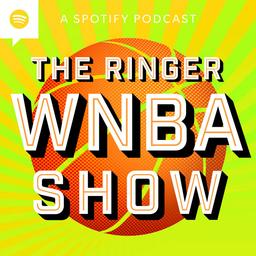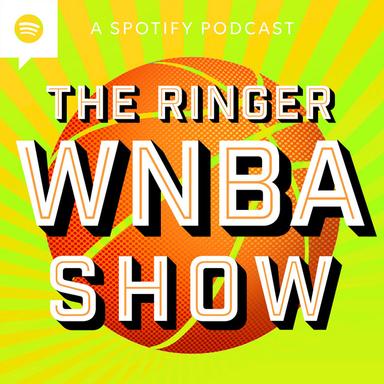A little more than a year ago, on a sweltering July morning in Las Vegas, Warriors executive chairman Joe Lacob hunkered down at Jardin, a new-American eatery tucked in the Encore hotel, in search of the first coach in Golden State Valkyries history.
For the past decade, the restaurant’s tropical vegetation and marble columns have served as the backdrop for Lacob’s summer meetings with players, staff, and prospective hires. On this morning, he was eager to meet Natalie Nakase, a well-regarded but unproven Las Vegas Aces assistant who came highly recommended by her peers.
Lacob ordered his usual—eggs with cheddar cheese, bacon, and sourdough toast—and made small talk as he and Nakase waited for their food. But after about 10 minutes of pleasantries, Lacob cut to the chase.
“I have high expectations, and we might as well get that right up front,” he told Nakase. “You have to win a title in five years.
“If you can't handle that,” Lacob continued, “you're probably not the right person."
Lacob famously made an identical guarantee about the Golden State Warriors during his first press conference after buying the team in 2010. But while that comment “just came out of my mouth unscripted,” Lacob now admits, his five-year declaration for the Valkyries is more considered, although no less ambitious. The last four WNBA expansion teams averaged just six wins in their inaugural seasons; in those franchises’ first five respective seasons, they combined for just one title (the 2004 Seattle Storm, in year five) and three total Finals appearances. Underneath the brash proclamations, Lacob is clear-eyed about the odds.
“The truth is, if you look at the history, it just doesn’t happen,” he says.
But Lacob believes that his deep pockets and his experience with the Warriors will help the Valkyries not only string together multiple titles over the next decade but also become one of the most valuable properties in sports. And in Nakase, he’s found a kindred competitive spirit. “I remember slamming the table,” she tells me. “I’m like, ‘Joe, I’m ready to sign.’”
More than halfway through its inaugural season, the WNBA’s newest franchise has been a roaring success. General manager Ohemaa Nyanin and her staff have cobbled together an overachieving mix of veterans, journeywomen, and international players. Nakase has guided the squad to 14 wins already, shrugging off the historic precedent for expansion teams and putting the Valkyries in contention for a playoff spot. And Sportico recently appraised the Valkyries at $500 million, making Golden State the highest-valued organization in all of women’s sports.
The Valkyries are both a product of and a catalyst for the league’s hockey-stick growth. Since 2020, ratings have skied to record-breaking highs, leading to the 11-year, $2.2 billion television deal signed last year. Between established stars like Sabrina Ionescu, A’ja Wilson, and Napheesa Collier and young headliners like Paige Bueckers, Caitlin Clark, and Angel Reese, the W’s talent pool is deeper and more star-studded than ever, and growing. Earlier this summer, the league announced that further expansion will bring the total number of WNBA franchises to 18 by 2030.
But with transformative growth comes transformative change. In the past few seasons, an influx of new ownership groups have invested in the league, starting an arms race that cuts into the advantage of Lacob’s mass fortune; just last week, a group led by Celtics minority owner Steve Pagliuca reportedly reached a record-breaking deal to buy the Connecticut Sun and move them to Boston. Meanwhile, a growing chasm between league revenue and player salaries could lead to the first lockout in WNBA history, complicating Golden State’s plans to add talent in a pivotal offseason. The first ride of the Valkyries has gone as well as anyone could have reasonably hoped, but there’s a long way to go—and many obstacles to navigate—on the way to fulfilling Lacob’s prophecy.
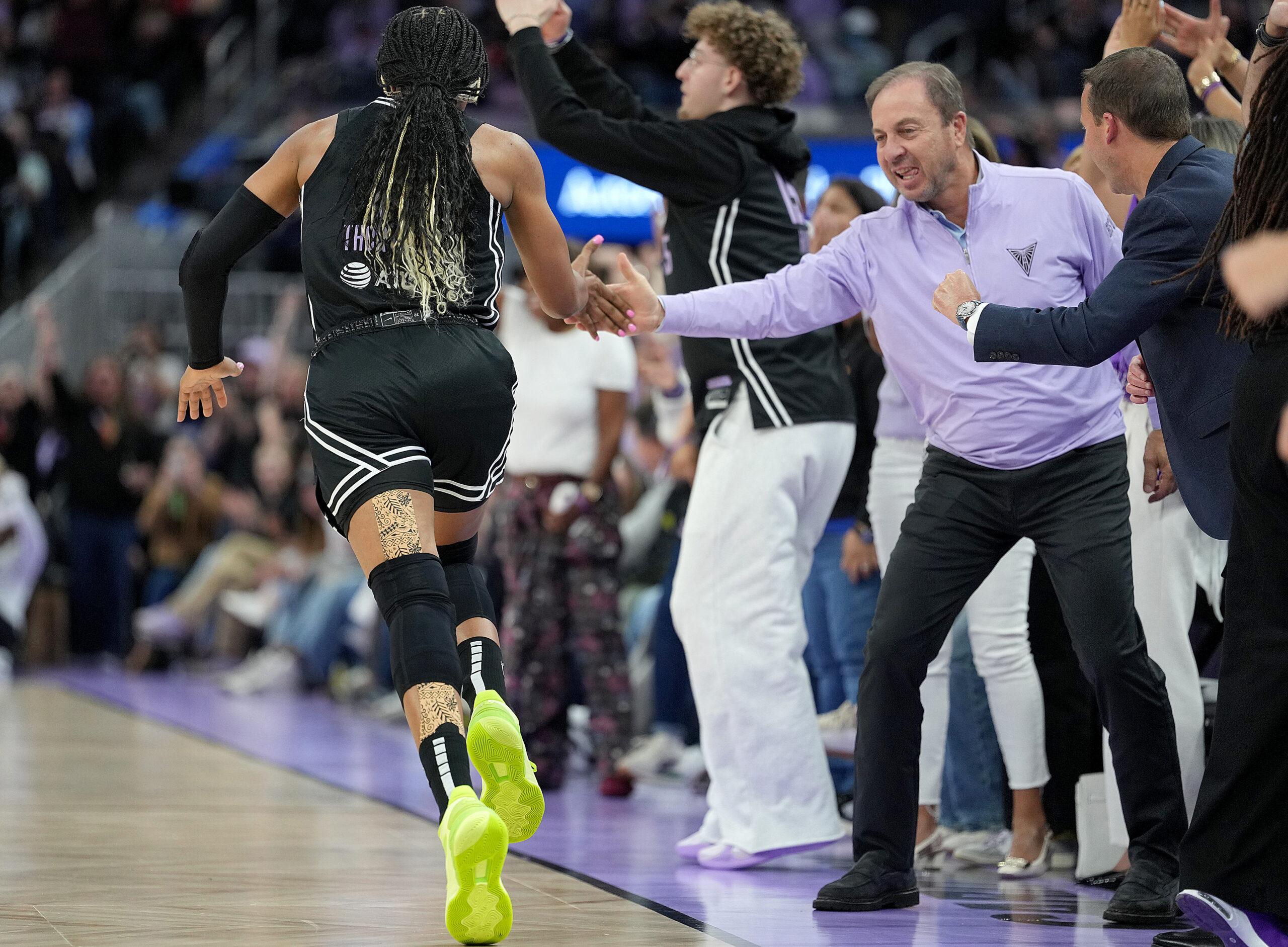
Kayla Thornton gets five from Joe Lacob after she scored a bucket against the Chicago Sky on June 27
To steer the Valkyries through the choppy waters of expansion, Lacob chose a leader who had seen just about everything. Nyanin spent the latter part of the 2010s as the assistant director of USA Basketball's women's program, where she had a hand in all aspects of the developmental system—from logistics to translating at competitions in Spanish-speaking countries. But by 2019, Nyanin was ready for a change, so she left USA Basketball and booked an Eat, Pray, Love–style trip around the world to figure out what she wanted to do next.
A few months into her sabbatical, Nyanin got a call from New York Liberty general manager Jonathan Kolb. After years of neglect under Jim Dolan, the Liberty had just been purchased by Joe Tsai and his wife, Clara Wu—Taiwanese business magnates and owners of the NBA’s Brooklyn Nets—who planned to bring the Liberty to Barclays Center in Brooklyn and had just hired Kolb to oversee a fresh start for one of the W’s original eight teams.
Kolb’s call came as a shock to Nyanin. He wanted her to join his staff as an operations manager, although she had no desire to live in New York (“I’m a D.C. girly,” she brags) and wasn’t sure whether she was ready for another job in basketball. But Kolb was persistent, and eventually he convinced her to sign on for a year. In 2022, Nyanin was promoted to assistant general manager, and she and Kolb worked closely on roster construction and cap mechanics. Together, they successfully moved the Liberty to Brooklyn and built the skeleton of the team that would win the 2024 title.
All the while, rival teams grew interested in hiring Nyanin away from Brooklyn. Nyanin, for her part, had no interest in leaving and didn’t even have an agent to facilitate a deal for a departure. But one afternoon in 2024, Kolb’s phone rang. It was the Valkyries asking for permission to interview Nyanin for their open GM job.
“I was real excited,” Kolb says. “I was sad because I knew she'd get it.”
Nyanin hopped on a plane to meet the Valkyries brass at Lacob’s Silicon Valley home. Initially, Lacob had his doubts—Nyanin wasn’t a former WNBA player, and she didn’t have experience as a lead decision-maker in the WNBA. But Nyanin’s vision for the job quelled any uncertainty.
“She knows every single player,” Lacob said. “She knew who she wanted, who she didn't want. In our first meeting, this is what I do recall, she literally knew the coach that she wanted.” (It was Nakase, whom the Valkyries hired five months after Nyanin.)
I remember slamming the table. I’m like, “Joe, I’m ready to sign.”Natalie Nakase
From there, Nyanin set out on the difficult task of building an entirely new roster in seven months. The team reportedly went after free agents Kelsey Plum, Courtney Vandersloot, and Brionna Jones, but each declined in favor of more established situations.
“What we said to these athletes was we want to have as much feedback as possible in year one,” Nyanin says. “So if you want to join this journey with us and be an active participant, this is the place for you. If you want a ready-made, put-together team, franchise, whatever, this isn't the place for you. We had to be very open and honest about it.”
With just 156 roster spots and a growing talent pool, the WNBA is filled with untapped potential. With fewer teams compared with the NBA and no developmental league akin to the G League, talented young players often get buried behind older veterans on the depth chart, with no avenues for playing time or improvement. After striking out on the star free agent market, Nyanin set out to target players who showed promise on other teams but may not have gotten enough tick to show their full potential.
In the expansion draft, she took sharpshooter Kate Martin—who’d played sparingly with the Aces but had helped Iowa reach the national title game twice—and Kayla Thornton, a lockdown defender who found little opportunity in an offense dominated by the Liberty's Big Three of Breanna Stewart, Ionescu, and Jonquel Jones. In free agency, Nyanin scooped up Veronica Burton, a top-10 pick in 2022 who had struggled to find roles in Dallas and Connecticut. Elsewhere, Nyanin perused her international Rolodex and poached Janelle Salaün, an undrafted rookie sharpshooter from France. Then she rounded out the roster with veterans like Tiffany Hayes, a 35-year-old who’d played under Nakase in Vegas.
If Golden State’s offseason was all about finding talent on the margins, its first season has been about wringing the most juice possible from a roster that’s deep but lacking in star power. It needed a coach who could pull all the right rotational levers and establish an identity where none had existed. In Nakase, it found one.
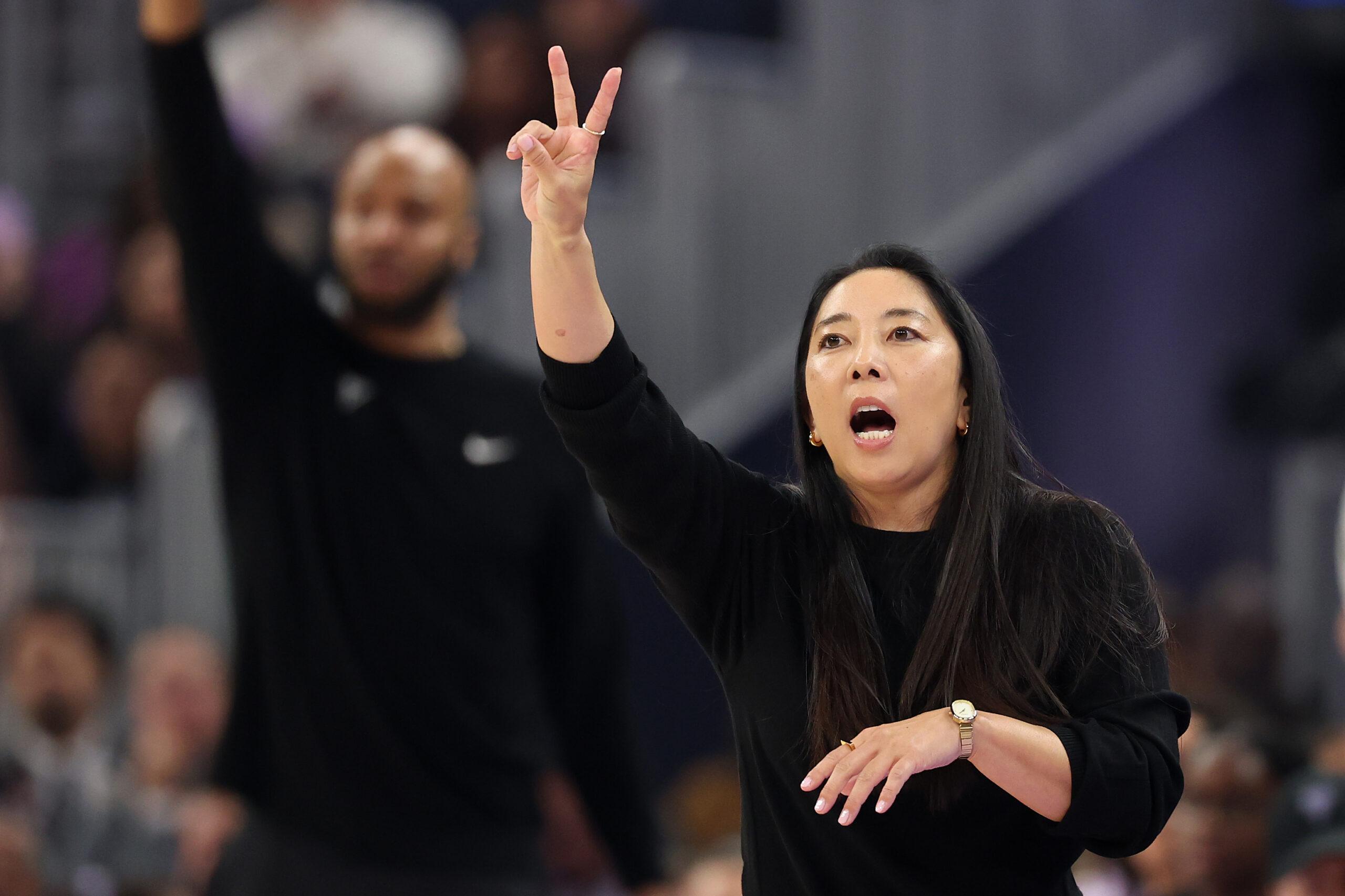
Natalie Nakase watches her team play against the Washington Mystics on May 21
The first Valkyries home game in May was one of the most riveting spectacles in Chase Center’s young history. Lilac shirts that read “First of a Lifetime” were laid across each of the arena’s 18,064 seats—all occupied. Bay Area luminaries dotted the edges of the court. Steve Kerr and E-40 sat along the baseline, and Anna Johnson—an Oakland basketball legend who’d suited up for the region’s first pro women’s team, the San Francisco Pioneers—banged the Ballhalla drum before tipoff to send the crowd into a frenzy.
The young connection between the Valkyries and their fans is already something special. Ninety-five percent of the Valkyries’ season ticket holders are new sign-ups—meaning they’re not carryovers from the Warriors—and the demographic is more in line with the everyday Bay Area resident than the tech titans who roam the halls during Warriors games. The Valkyries have the highest average attendance in the WNBA, and when the Valks scrap their way to a run, the roar from the crowd rivals, if not eclipses, that of a Warriors playoff game.
At the center of it all is Nakase. After light recruitment out of high school, in 1998 she walked on at UCLA, where Nakase became the school’s all-time leader in steals, assists, and 3-pointers made. When the WNBA didn’t come calling, she played a few years in the National Women’s Basketball League until the league folded in 2007 and then took coaching gigs around the world, including in Japan and Germany. In 2014, she took a yearlong coaching internship with the L.A. Clippers that morphed into a video coordinator position under Doc Rivers and later an assistant coaching job with the Clippers’ G League team. After being a finalist for the Phoenix Mercury head coaching job in 2022, she joined the Las Vegas Aces staff under Becky Hammon, where she coached until Lacob hired her to lead the Valkyries.
During her tenure in Vegas, Nakase developed a reputation for taking the game a little too seriously. While Hammon handled the Aces’ dynasty with a measured hand, Nakase acted as the team’s iron fist, making sure the Aces never missed a beat. “She was the enforcer,” says Hayes, who signed a one-year deal with the Valkyries before the season. While Hammon cultivated a playful ethos, Nakase “was the one who was like, ‘Hey, y’all need to get on y’all shit,’” Hayes tells me.
Now, Nakase no longer acts as the enforcer but as the CEO of the entire operation. She draws lessons from a decorated group of mentors. From Rivers, she learned how to harness her zeal for competition. From Hammon, she learned to offset that zeal with fun, lest she lose the team. She also has a close relationship with Celtics coach Joe Mazzulla, whose no. 1 piece of advice was to hire people who can cover your weaknesses. And as Nakase spent more and more time around the Warriors, she strove to emulate the way Kerr holds star players accountable.
If you want to join this journey with us and be an active participant, this is the place for you. If you want a ready-made, put-together team, franchise, whatever, this isn't the place for you.Ohemaa Nyanin
Nakase’s work ethic has kept her team anchored through the highs and lows of its first season. A week after its opening night loss, Golden State got its lick back against the Sparks, handing Los Angeles an 82-73 loss at Crypto.com Arena. On June 7, Golden State blew out the Aces 95-68, holding former MVP Wilson to just 5-of-13 from the field, providing the defense and toughness Nakase covets. However, the Valkyries’ lack of star power tends to put a ceiling on Golden State’s success down the stretch of games. On June 25 at Chase Center, the Valkyries held a 75-74 lead over the Liberty with two minutes to go, only to watch Ionescu, who was dealing with a neck issue so dire that she struggled to turn her head left or right, lead the Liberty to an 81-78 win.
The question of who will appear on the floor is a daily conundrum. In Golden State’s first four games, Nakase trotted out four different starting lineups. In late July, Thornton, the team’s leading scorer, suffered a season-ending knee injury. But contributors like Salaün, Burton, and Kate Martin have kept the team afloat, as the Valkyries fend off contenders for the W’s final playoff spot.
“I reflect a ton,” Nakase told me in Vegas in mid-July, a day after the team lost in the final minute against Indiana, its second straight loss on a four-game road trip. “I go back and I look at the film, and I go back right away and write notes on every position, on every play call, on every defense position. Did I do the right thing? Where did I go wrong?
“I think this is one of the hardest things, being in a leadership position, and taking big risks, and making big decisions,” she adds. “I do question my choices. I do question my decisions, so it’s like I’ve got to continue to believe in myself, especially after losses.”
Nakase has been staying up into the wee hours of the morning since about two months before the season even began, when she simulated the rigors of the upcoming season. “I would try to either look at the opponents’ films or even watch the NBA,” she says. “Study some of their close end-of-the-game stuff, or just get games from video people and be like, ’Hey, can you send me games? I want to just kind of see what they’re running.’” Nakase says that between watching film, traveling, and preparing for games and practices, she averages about four hours of sleep per night.
Now, as a three-game home stand approaches this week, Golden State has its work cut out for it. The last month hasn’t been kind to the Valkyries’ health, as Thornton’s injury has exacerbated their talent discrepancy.
“I think we just wanted to establish a culture and be competitive,” Lacob reflects. “Now, it turns out, halfway through the season, things are going really well and we’re in the playoff mix at this point. We have a shot.”
When I ask Nakase what she wants from the rest of the season, her answer is simple. “To survive.”
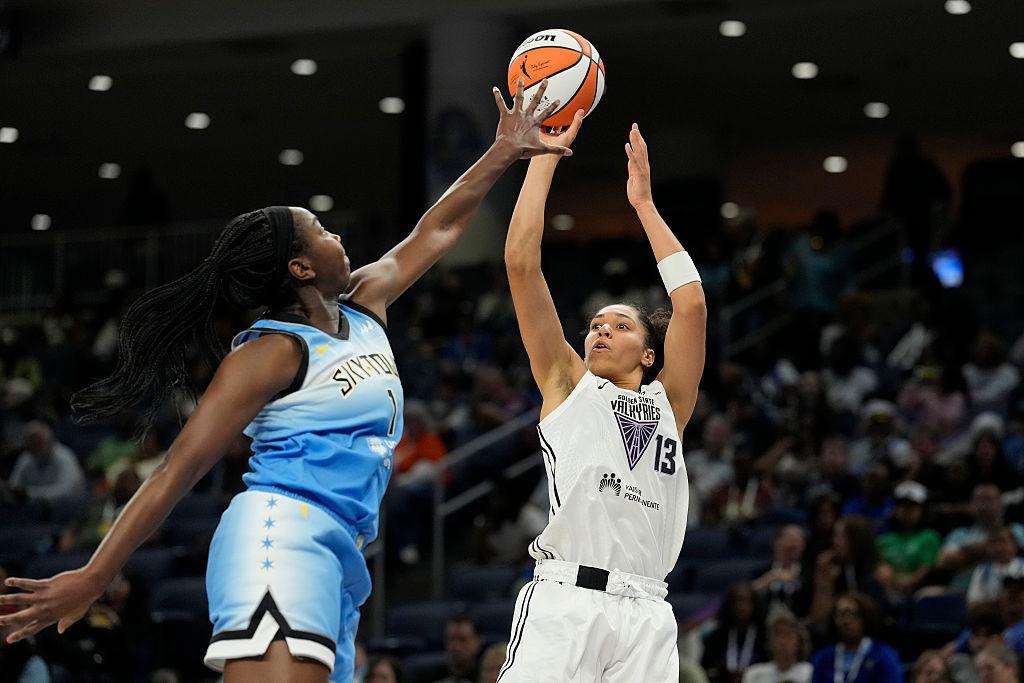
Janelle Salaün shoots against the Sky’s Elizabeth Williams on August 1
Earlier this summer, Lacob and his wife, Nicole, were on a boat in the Mediterranean, enjoying the fruits of their $2.3 billion fortune. “It wasn’t my boat,” he says. “Somebody else’s.” A beautiful vacation, to be sure, except for one problem: He was a world away from the Valkyries, who were preparing to host a game at Chase Center.
“It was 4 in the morning, and I got up to watch it. Who does that?”
Such is life for a man whose thirst for domination is unquenchable. Lacob prefers to be on the hardwood on game nights. “I don’t want to read about it or hear about it on Twitter,” he tells me. “I want to watch it. I want to see.” As with the Warriors, Lacob hardly ever misses a Valkyries game, with only rare exceptions. “July’s a tough month because I got to have some vacation; otherwise, I won’t have a marriage.”
During his 15 years with the Warriors, Lacob has developed a reputation for being an involved owner. He’s in the draft room offering input on prospects and is often in player pitch meetings during free agency, selling Golden State’s brand. During games, he’s known to feverishly text his thoughts on player and coach performance to general manager Mike Dunleavy in real time. I ask whether he’s using a similar approach with the Valkyries.
“I pretty much hear from Ohemaa—I don’t want to say every day, but multiple times a week,” he says. “Certainly during certain periods, it’s on a more of a daily basis. We text or we talk. They’re quick chats. She’s just checking her thinking, but she’s making the decisions, she’s making the recommendations, doing a great job of it.
“So look, I’m involved, but I’m not running things,” he continues. “I let people do their job, just like I let Mike do his job. People always think that I’m so involved. There’s times I don’t agree with the decisions, and I’ll just ... if I feel extremely strongly about it, I might overrule it. That’s hardly ever happened. Maybe twice I can remember in the whole period of the Warriors.”
“Would you mind divulging those times?” I ask.
“I’ll detail those later in some sort of a book,” he responds. “Because I don’t think they’re for public consumption. There are things that people assume went down a certain way and actually didn’t.”
The Valkyries will need more than Lacob’s generational persistence to reach the WNBA mountaintop. This season has been the best branding a new team could ask for, but the next test is how they will build on it. In the coming months, nearly 80 percent of the league will be free agents, and the Valkyries have positioned themselves to attract elite talent. “We have our internal goals as to who, what, where, why. And also I’m trying to be as open as possible to make sure that we’re not pigeonholing ourselves and just being too prescriptive,” Nyanin tells me.
The Valkyries will go star hunting. Ionescu, a longtime Warriors fan whom Lacob has long sought to bring home, and Wilson, whose Aces are battling the Valkyries for a playoff spot, are free agents, but it’s unclear whether they have interest in Golden State. And the Valkyries’ strong start might hurt their chances to add star-level talent by dropping them out of contention for a top pick in the 2026 draft.
But Nyanin believes that Golden State’s unique experience as a recent expansion club could provide an advantage, as the CBA is set to expire after this season. “I think where we have an edge is we were the only team that had to go through the expansion draft process in selecting the athletes. And so we’ve put in some procedures that helped us really be more decisive about our decision-making.”
The WNBA’s next crop of franchises is surely paying attention. Golden State has provided a blueprint for how to pull off expansion in today’s WNBA. Lacob’s ambitious five-year guarantee is more than an optimistic slogan; it’s a mission statement for the entire organization. “Some would say it’s an unreasonable [goal],” Lacob admits.
“I think it’s reasonable.”
